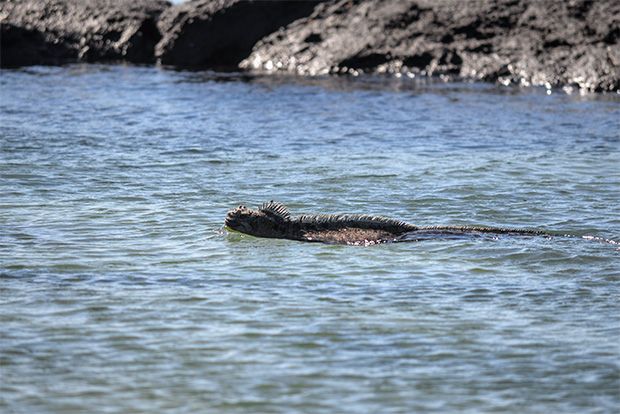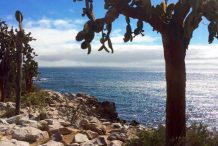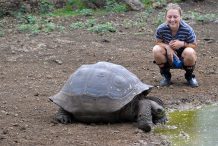Cruises to Galapagos Islands in December
The best places to visit and tour the incredible Galapagos Islands. Cruises to Galapagos Islands in December
The Galapagos Islands are the product of continuous volcanic eruptions. For their unique location they have developed unique species in the world, of a wealth very difficult to believe. This is why they are one of the favorite places of all travelers who love wild species.
Usually two stations can be considered. The first station that goes from December to June is called Hot Station. And the second climatic station that goes from June to November called Dry Station. The best time to take advantage of the Galapagos Islands is the transition months. However any month of the year is good to visit the islands, there is no longer month when the Galapagos climate is unbearable or you do not find interesting flora and fauna to observe.

Since there are two seasons that are so different from each other, those that mark the beginning or the end of mating for the great majority of species, there are some months in which both phases can be witnessed at the same time. There is a change between the hot station and the dry station, and then a transition between the dry season and the hot season (November to January).
[enlace_dinamico_en]
Do not know what to do in the Galapagos Islands? No problem! Booking a trip through the islands, you can spend up to two weeks knowing all the natural beauty that this charming place of Ecuador has to offer. All-inclusive trips can be booked online up to a month in advance, with the option of payment by card or transfer.
Genovesa Island: Genovesa island is also known as the island Tower and is considered as the most striking island of the archipelago. Its name comes from the city of Genova (Italy) in where it´s said that was the birthplace of Columbus. It is the ideal location for the ornithologists by the abundant presence of birds, highlighting some as seagulls of tail separated or lava seagulls, which are the only gulls in the world who have nocturnal hunting habits. Genovesa Island is an extinct volcano, which has suffered several landslides due to its ancient activity. We can find two areas of visit which is can access through a fissure that exists to the feet of the volcano doing this walk an unparalleled adventure. The island has shaped of horseshoe. Millions of years ago were a huge volcano whose southern wall collapsed, forming the Great Darwin Bay, where currently some birds have their nests. In the center of the Genovesa Island is the Arcturus Lake, of salt water, where resides the marine iguana smaller of the archipelago. In the same way, it is possible to see marine iguanas, fur seals and a huge forest of Palo Santo. At Darwin Bay, It is possible to dive along the inner to the outer wall. Another possibility is from the outer side of the volcano through the channel in the boiler. Genovesa is home of a great number of oceanic birds, both for breeding and nesting, including large frigates, blue-footed boobies, seagulls of frac, tropical birds, finches of Darwin and petrels.
Leon Dormido on San Cristobal Island: A place also called Kicker Rock; correspond to two huge rock formations of lava, which rise for more than 100 meters over the ocean, which can be from the ocean from Puerto Baquerizo. Its curious name comes from similarity to a sleeping sea lion, to see them from a distance. This place is one of the most famous tourist areas of Galapagos for snorkeling and diving, being possible to swim with stingrays, sharks, sea lions and fishes. Its sharp rocks also make of the habitat of enormous colonies of birds, coexisting varieties like blue-footed boobies, frigate birds and pelicans.
Santa Fe Island: Uninhabited island by the man, known for beaches of calm waters in the Barrington Bay, where you can walk in both arenas where sea lions abound like diving snorkeling surface. If you like animals, you can see giant land iguanas, unique animals of this island, which reach up to a meter in length.
Dragon Hill: It has its name because to for a long time, was one of the few places in the Santa Cruz Island where were land iguanas in healthy state. This place was part of varied efforts to maintain the colonies of iguanas, in order to ensure their reproduction. At present there are no dogs in Dragon Hill, although the Galapagos National Park carries out a lot of controls of other animals that can be dangerous. In the beautiful lagoons present in this site, there is shrimp (Artemia salina), the same as the food of the flamingos. At certain times of the year there is more abundance and therefore the quantity of these birds is larger. In times with many precipitations the water becomes too sweet and therefore the population of crustaceans is smaller, which has consequences on the amount of flamingos. Dragon Hill has been open to the general public since 1993. The beach has rocky formations. At high tide it is an excellent sector to do surface diving.
Environment
In our all-inclusive trips we can observe and approach to the home of animal species that have been hidden for hundreds of years, with incredible diversity and practically immaculate.
GALAPAGOS CRUISES 2024
NEMO 3
| DEPARTURES | ITINERARY | AVAILABLE CABINS | SPACES | |
|---|---|---|---|---|
| There aren't available dates for the selected dates |
















